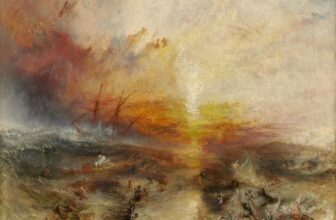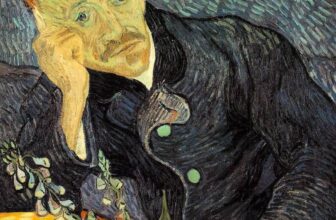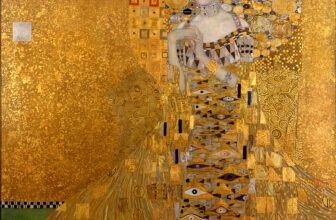
A War on the Brink of Collapse
On a bitterly cold Christmas night in 1776, while most of the world was feasting or celebrating, General George Washington embarked on a desperate gamble that would reshape the fate of the American Revolution. It was a moment so steeped in daring, resilience, and symbolism that it would later be immortalized in one of the most iconic paintings in American history. The crossing of the Delaware River was more than just a tactical move; it was a bold stroke against despair, a turning point in a war that seemed lost, and a lasting symbol of American grit.
But what really happened that icy night? Who were the people with Washington in the boat? How long did it take to cross, and what was the cost? And what became of the original painting that commemorates this audacious moment?
Let’s dive into the dramatic story and unpack its historical significance.
By the winter of 1776, the American Revolution was teetering on the edge. Following a string of devastating defeats in New York and New Jersey, morale in the Continental Army was plummeting. Many soldiers were sick, wounded, or ready to desert. Washington’s forces had dwindled to just a few thousand. Most enlistments were due to expire at the end of December, and the army might soon cease to exist.
British and Hessian forces (German mercenaries hired by the British) were comfortably wintering across New Jersey. Washington knew that if he didn’t strike back , and fast , the revolution might die before it even fully began.
The plan that emerged was daring: cross the icy Delaware River on Christmas night, march overnight to the Hessian-held town of Trenton, New Jersey, and launch a surprise attack at dawn. The Hessians would be celebrating and unsuspecting. But the odds were long, the weather brutal, and the river treacherous.
What happened during the crossing?
On December 25, 1776, in the dead of night, Washington led about 2,400 soldiers across the Delaware River. Snow lashed their faces. Freezing rain turned into sleet. The boats were filled with men, artillery, and horses, all struggling through the ice-choked waters. Most of the soldiers couldn’t swim. Many lacked shoes or warm coats.
The crossing began around 6 p.m. but dragged into the early hours of December 26. The operation was supposed to be completed before midnight, but due to weather and ice, it took about nine hours, with the last troops landing near 3 a.m.
How long did it take Washington to cross the Delaware?
The crossing itself , from McConkey’s Ferry in Pennsylvania to the New Jersey side , was roughly three-quarters of a mile wide, but due to ice, darkness, and the size of the force, it took about nine hours to get all men and equipment across. And even then, two other divisions under Generals Cadwalader and Ewing failed to make the crossing due to icy conditions, leaving Washington without the reinforcements he expected.
Despite these setbacks, Washington pressed on with the men he had.
The Surprise Attack on Trenton
By the time the army regrouped on the New Jersey side, it was nearly dawn on December 26. Soaked, shivering, and exhausted, the troops began their nine-mile march south to Trenton through icy roads and blizzard conditions.
At around 8 a.m., they launched their attack.
The Hessian garrison, led by Colonel Johann Rall, was caught completely off guard. Within 45 minutes, the Americans overwhelmed the enemy, capturing nearly 900 Hessian soldiers, along with weapons, supplies, and desperately needed morale.
Miraculously, only two American soldiers died in the battle, both from exposure during the march and not combat. Four others were wounded, including future President James Monroe.
The Significance of the Crossing
Why was Washington’s crossing of the Delaware so important?
The victory at Trenton wasn’t large in a strategic sense, but its psychological impact was massive. Just days before, the Revolution was seen by many , including members of the Continental Congress , as doomed. Washington’s successful surprise attack reinvigorated the patriot cause and proved that the Continental Army could defeat professional European troops.
It also encouraged re-enlistments. Soldiers whose terms were about to expire now had a reason to stay and fight. The American public, demoralized by months of defeats, suddenly had a hero in George Washington and a reason to believe in the cause again.
This momentum carried forward into the Battle of Princeton a week later, where Washington again outmaneuvered the British and scored another vital victory.
In essence, Washington’s crossing of the Delaware saved the Revolution at its darkest hour.
What Happened to the Original “Washington Crossing the Delaware”?
The dramatic imagery of this event has lived on largely because of Emanuel Leutze’s famous 1851 painting: Washington Crossing the Delaware. Leutze, a German-American artist, created the painting in Düsseldorf as both a patriotic tribute and a nod to liberal revolutions happening in Europe.
The original painting was massive , over 12 feet high and 21 feet wide , and intended to inspire democratic movements. It portrayed Washington standing heroically in the boat, looking forward into the storm, surrounded by men representing a cross-section of colonial society.
But tragedy struck.
The original version of the painting was destroyed in a World War II bombing raid in Germany. Fortunately, Leutze had made a second, smaller version which he sent to the U.S., and it is that version which now hangs in the Metropolitan Museum of Art in New York City.
Who Are the People in the Painting?
Leutze’s painting is not just a tribute to Washington, but a symbol of American diversity and determination. While not historically accurate in every detail (for example, Washington would not have stood upright in a small boat amidst ice floes), the painting captures the spirit of the moment.
The people depicted with Washington represent the many backgrounds that formed the Continental Army:
General George Washington stands at the center, gazing forward, symbolizing leadership and resolve.
James Monroe, the future 5th President of the United States, is believed to be the man holding the American flag.
Prince Whipple, a Black soldier and freed slave (though likely not present at the actual crossing), is often identified as rowing near Washington.
A Scottish highlander, a western rifleman, and a farmer represent different American regions and walks of life.
A man in a beret with a red scarf is believed to be of French origin, hinting at European support or immigration.
This deliberate representation of different ethnicities and classes emphasized the unification of the American people in pursuit of liberty.
How Many Americans Died Crossing the Delaware?
Despite the grueling weather and conditions, the crossing itself resulted in zero combat deaths. However, two American soldiers died of exposure (hypothermia) either during or shortly after the march. That low casualty count is remarkable given the conditions and further underscores the precision and success of the operation.
Legacy: More Than Just a Battle
Washington’s crossing of the Delaware has become much more than just a military maneuver. It represents one of the most iconic moments of American perseverance.
In American Memory and Culture
The image of Washington in the boat has been reimagined countless times in popular culture, political cartoons, advertisements, and even parodies.
The phrase “crossing the Delaware” has come to symbolize bold leadership and taking decisive action in the face of adversity.
In Military History
The operation is studied in military academies for its audacity, timing, and execution.
Washington’s ability to lead a ragtag army through icy waters into a surprise attack remains a testament to courage and strategic brilliance.
In Monuments and Museums
The Washington Crossing Historic Park in Pennsylvania marks the site of the original crossing.
Reenactments of the crossing take place annually on Christmas Day, drawing visitors and historians from around the world.
The River That Carried a Nation’s Hopes
History often turns on moments of incredible risk , moments when defeat seems certain and victory impossible. Washington’s crossing of the Delaware was one such moment. Against the odds, in the worst of conditions, he led a worn-out army into battle and snatched hope from the jaws of defeat.
It wasn’t just the success at Trenton that mattered. It was the message: that the fight for freedom was far from over. That courage and resolve could defy the greatest empire in the world. And that even in the darkest night of winter, the light of liberty could still shine.
To this day, the image of Washington standing tall in that icy boat reminds us of the power of bold leadership and the unbreakable spirit that founded a nation.




